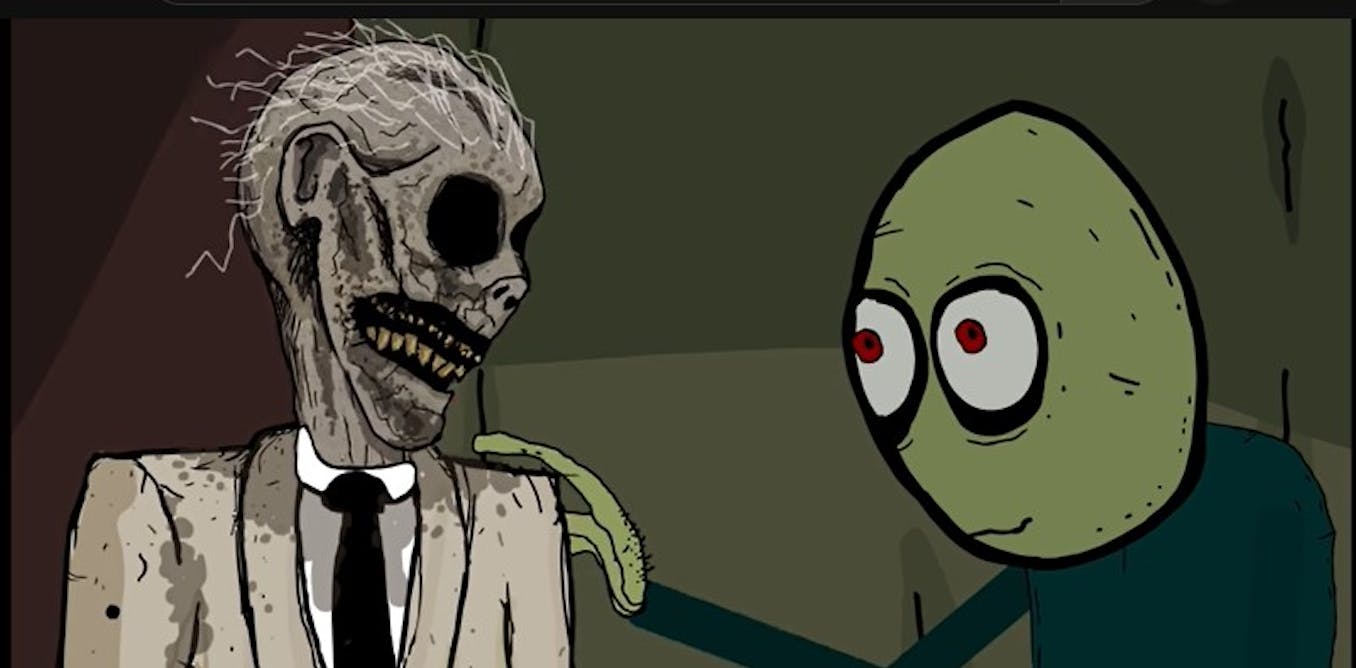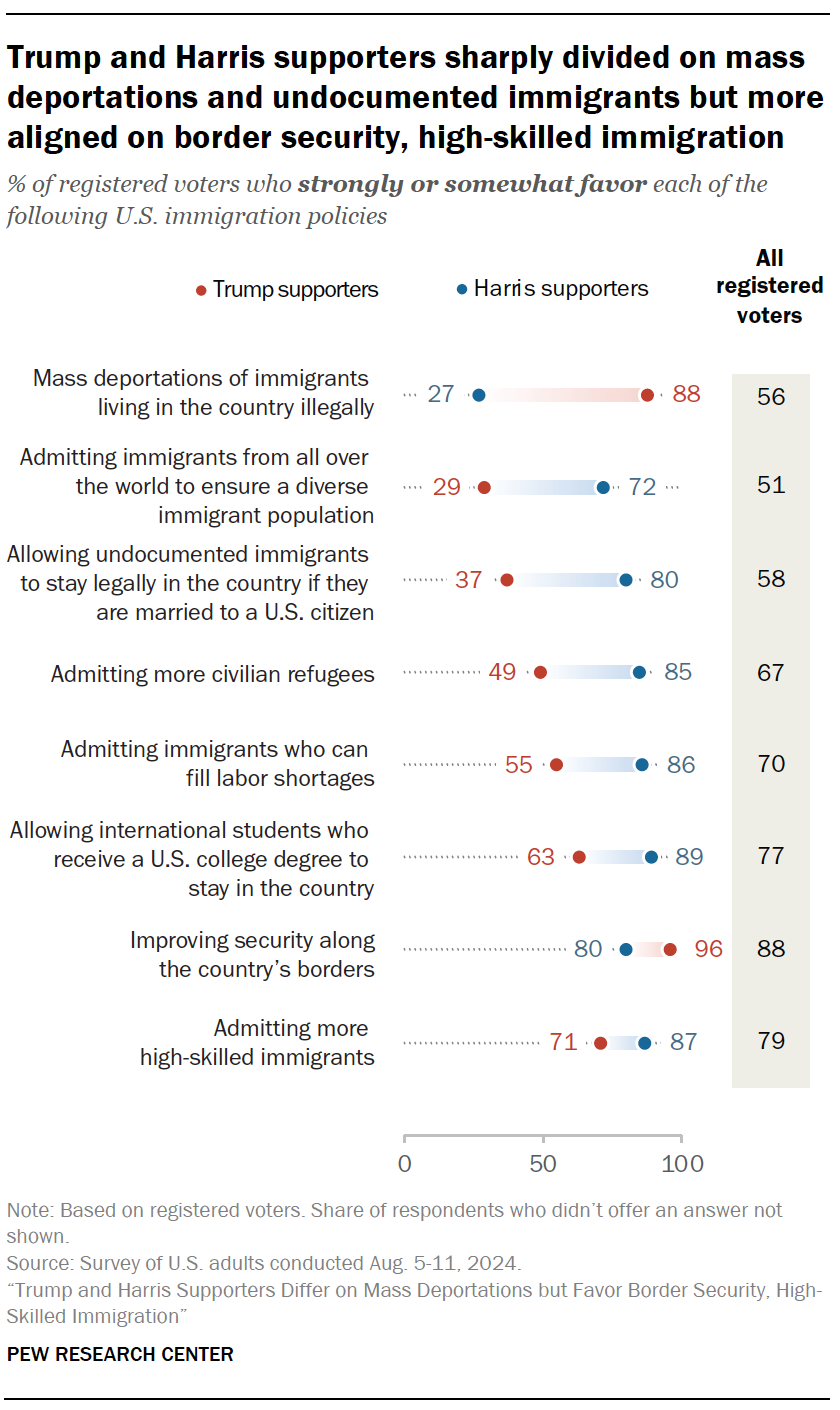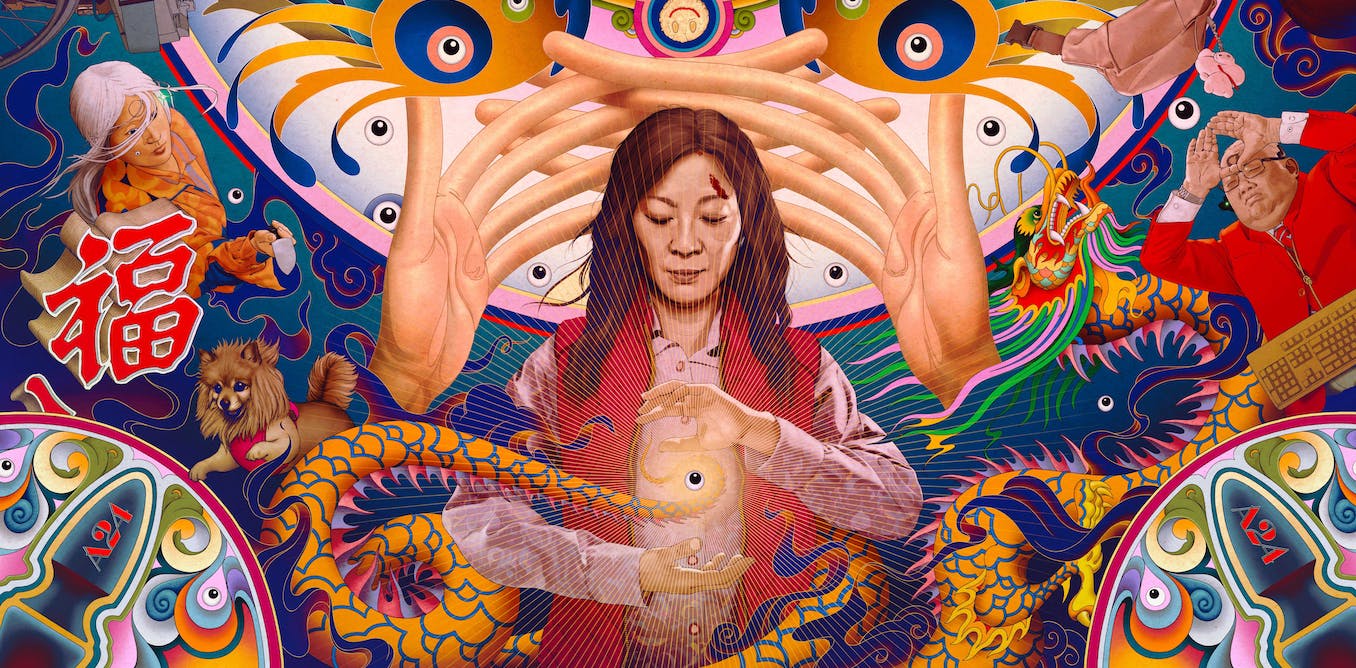The words “Salad Fingers” may not mean anything to some readers, but for others they will trigger nostalgia, some very discomforting memories – or perhaps a “weird” combination of both.
Salad Fingers and his perturbing love of rusty spoons is an uncanny animated pioneer of viral YouTube videos. This creepy character came into being just before the arrival of YouTube, but went on to become the embodiment of “the weird part of YouTube”.
The character’s influence is enduring – almost two decades after Salad Fingers first saw the light, the eponymous animated web series is still ongoing. The latest episode, Harvest, was released in September 2023.
In the first academic paper to be published on the series, we argue Salad Fingers was a key influence on “weird YouTube’s” countercultural melange of content that escapes the aesthetic, regulatory and moral constraints of mainstream film and television.
Salad Fingers and the dawn of ‘weird YouTube’
The year was 2004, and the launch of YouTube was still a year away. On Newgrounds, a still-active platform dedicated to user-generated content, a young British artist by the name of David Firth released a web series titled Salad Fingers. The series featured a character with an eerie but gentle and soothing voice who inhabits a mysteriously apocalyptic, desolate landscape.
The first episode, Spoons, shows the protagonist caressing a rusty spoon and reaching a state of sensual extasis. Like most episodes that would follow, it’s punctuated by repetitive, looping music courtesy of experimental electronic duo Boards of Canada that – like the character’s voice – is as calming as it is unsettling.
Salad Fingers is a green anthropomorphic figure coded as male and with lettuce leaves as hands. His blank, simple features are rendered using rough-hewn animation that looks like a child’s drawing. This rudimentary animation was done in Flash, a software that enabled amateur artists to experiment with narrative and visual style. Flash also simplifies content distribution: the software creates vector images, which weigh less and use less bandwidth.
Over the years, the series has come to enjoy a cult following and Firth released 13 new episodes between 2005 and 2023.
While it looks and feels like a children’s show, Salad Fingers does not conform to the norms of children’s television. The series expanded the boundaries of what 21st-century animation can do as an expressive medium.
Today, it’s common to see animations with a subversive, experimental edge destined for adult consumption and dealing with existential crisis (think of Netflix’s Bojack Horseman).
But when Salad Fingers was released, it pushed generic boundaries in shocking ways that harnessed the internet’s freedom from content regulation like ratings systems (such as Australia’s G and PG ratings designating child appropriateness).
These ambiguous intentions are the combined appeal and horror of the show: the most common Google search phrases around the series are “Is Salad Fingers supposed to be scary?”, “Is Salad Fingers a children’s show?” and “Why is Salad Fingers weird?”
Firth’s series transgressed the norms of animation styles alongside other artists of the period who used web animation in an experimental way (among them, Homestar Runner by The Brothers Chaps, Neurotically Yours by Jonathan Ian Mathers, and the 2003 viral video The End of the World by Jason Windsor).
Salad Fingers is beyond classification
While Salad Fingers is culturally aligned with boundary-pushing animated TV series popular at the time, such as The Simpsons and South Park, it’s also distinct due to its avant-garde ambiguity.
Firth talks about the influence of beloved kids’ cartoon Rugrats on his series and character, and indeed Salad Fingers behaves in a very childlike, imaginative manner. However, he also commits unhinged acts of violence with no apparent moral compass. He speaks to his finger puppet imaginary friends, but also to corpses, and cooks a child alive in the oven.
When a Canadian primary school teacher was suspended for screening Salad Fingers to his class, Firth tweeted “I fully support Salad Fingers being shown to children. In fact it should be mandatory”.
This subversive play with the boundaries of good taste and child/adult content is at the heart of Salad Fingers, and of YouTube’s “weird part”.
Yet Salad Fingers also highlights how this weird YouTube mode continues avant-garde and surrealist art, film and television traditions.
The barren landscapes in which the character exists have links to the dark portraits of painter Francis Bacon, to the filmography of auteur David Lynch, and to the grim animated characters of cult art-rock opera Pink Floyd: The Wall. The show’s apocalyptic ethos was also indicative of post-Y2K pessimism and rebellion against aesthetic, cultural and political norms.
The series aligns such traditions with the gleefully disruptive generic ambiguity of early 2000s online video sharing cultures – an ambiguity made possible by the web’s freedom from the constraints of the formal production and distribution structures of film and television.
The series would go on to influence a vibrant and globally beloved genre of “weird” YouTube content committed to derailing cultural expectations about the distinctions between children’s and adult content.
A beloved example is Michelle Lyons’ animated web series [Funny Horsie], which emerged in 2011: this dark and absurd series about an ungainly horse, is ironically described as “one of Britain’s most well-loved, yet obscure children’s programmes”
Another progeny of Salad Fingers is cult YouTube puppet-animated hit Don’t Hug Me I’m Scared (Joseph Pelling and Rebecca Sloan, 2011-16). This nightmarish parody of puppet-based kids’ shows such as Sesame Street became a BBC Channel 4 television series in 2022, highlighting how the influence of weird YouTube is crossing into mainstream media.
Today, “weird” content on YouTube remains indebted to Salad Fingers and other early internet viral animations such as Funny Horsie.
Just this year, a series titled Skibidi Toilet became a viral sensation. The videos show, in rudimentary 3D animation, a series of moving toilets with heads sticking out of them. The singing, fighting toilets have become a sensation, with Business Insider claiming the series “captures the anarchic spirit of the internet”.
Salad Fingers embodies the anarchic weird YouTube spirit that lives on through these singing toilet heads.




